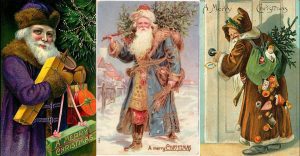Hello everyone!
Christmas is just around the corner and I just can’t help, but feel overjoyed! Even during the crazy times that we live in, realizing how much we mean to each other is what Christmas is all about, right?And today I am going to talk to you about Christmas traditions of the 19th century that paved the road for the ones we have today!As you might already know, before the Victorian times, there were no Christmas trees or exchanging of gifts! Or even Christmas Carols! I know, right?All there was, was lots of food and drink, church, charity and mistletoes! So it is only natural that we start wondering. How did all these come to exist today? What about Santa Claus? I have the answers, dears.Well, actually, Charles Dickens has all the answers, as his works started portraying the development and evolution of the Victorian Christmas celebrations in great detail. Many people claim that Christmas is a commercial holiday and even though there is more to it, these people are right. Because industrialisation made it so. Let me dig a bit deeper starting from the decorations.

As early as the 16th century, people were decorating their houses and windows with boughs of Holly and other greenery, which was simply called ‘Christmas’. According to Judith Flanders, kissing boughs were also frequently seen. And what were they? Just crossed hoops of greenery decorated with apples and oranges, coloured ribbons and paper flowers! Well, exactly what we hang on Christmas trees. Only that didn’t come around until the 19th century!Until Queen Victoria and her German husband put up a decorated Christmas tree, only people that lived close to German immigrants knew of the tradition. But people admired her so much that they started getting their own Christmas trees! We can only admire how far-reaching and impressive her influence was on the whole world.

Oh and don’t get me started on Christmas Carols! I just love them! The more traditional, the better! People used to sing them in the 13th century, but with the Puritan rejection of Christmas, the tradition faded away. Apart from that, the only people idle enough to play music and sing carols were wealthy lords and ladies. Until Charles Dickens wrote his famous work, A Christmas Carol, and inspired publishers to print carol anthologies and make them accessible to the middle classes. And in the next few years, by turning Christmas into a national holiday, everyone could spend time with their families for the first time. And of course, even pianos and musical instruments started becoming accessible to a lot more people besides the aristocratic classes. Can you imagine not being able to send your Christmas Cards to your loved ones? Well, that was the case until 1880, as people used to send letters that were extremely expensive. And the worst is that the recipient had to pay for it, so I guess your holiday wishes would not have been so well received back then…

And just wait till you tell your kids that there’s no Santa Claus! Well, that would be dangerous! In the past, St. Nicholas was the one to bring presents to the children, but his holiday soon disappeared. In its place came Old Christmas, a thin, old man who represented the spirit of the Season. Thankfully, “by the 1820s he had his sleigh and reindeer, by 1870 he customarily wore a bishop’s red robes; and by the late 1880s he melded with Old Christmas in Britain, to become Father Christmas, part of the home-based, domestic holiday, and a symbol of giving.”And that’s how it all started and eventually became what we know today as Christmas! Intense commercial advertising helped tremendously in spreading the word and the image of perfect Christmas reached every corner of the known world!Well, if you ask me, I think this is perfectly okay. As long as we always remember to share and spend time with our families, Christmas will always be there for a little cheer and joy.(And the opening of presents, of course!)
Written byViolet Hamers!
Source: British Library

 Share this book
Share this book